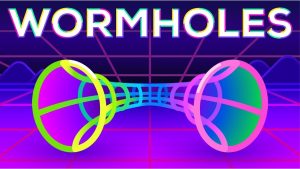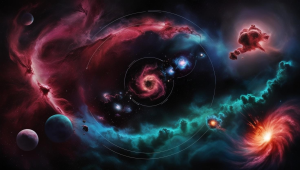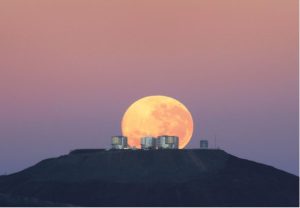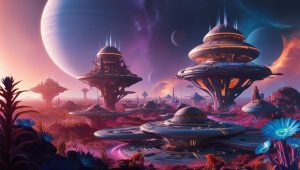
WORMHOLES:COSMIC SHORTCUTS
What if you could rocket from Earth, not to the Moon or Mars, but down a wormhole that loops all the way across the vast Milky Way, slashing travel time
Astronomy, the study of celestial objects and phenomena, has captivated human imagination for centuries. If you have a deep interest in exploring the universe, starting with the right books can provide a solid foundation and spark your curiosity. Here is a selection of must-read books that cover various aspects of astronomy, from fundamental principles to the latest discoveries.
Carl Sagan’s “Cosmos” is a timeless classic that has inspired countless people to explore the wonders of the universe. Written in a poetic and accessible style, this book takes readers on a journey through space and time, exploring the history of the universe, the development of life, and humanity’s place in the cosmos. Sagan’s ability to explain complex scientific concepts in a way that is both engaging and understandable makes “Cosmos” a perfect starting point for anyone interested in astronomy.
Stephen Hawking’s “A Brief History of Time” is another essential read for aspiring astronomers. In this book, Hawking tackles some of the most profound questions about the universe, including the nature of time, black holes, and the origin of the cosmos. Despite the complexity of the topics, Hawking’s clear and concise writing style makes these concepts accessible to a broad audience. This book provides a deep dive into the theoretical aspects of astronomy and cosmology, making it an invaluable resource for those looking to understand the underlying principles of the universe.
For those who are eager to observe the night sky, “NightWatch” by Terence Dickinson is an excellent starting point. This practical guide provides detailed information on how to observe celestial objects with the naked eye, binoculars, and telescopes. It includes star charts, tips on choosing and using telescopes, and information on various astronomical phenomena. “NightWatch” is well-illustrated and user-friendly, making it a great resource for beginners who want to start stargazing and identifying objects in the night sky.
Brian Greene’s “The Fabric of the Cosmos” delves into the nature of space and time, exploring the mysteries of the universe from a theoretical physics perspective. Greene explains complex ideas such as quantum mechanics, string theory, and the fabric of spacetime in a way that is both engaging and comprehensible. This book is ideal for readers who are interested in the deeper, more abstract aspects of astronomy and cosmology.
Another masterpiece by Stephen Hawking, “The Universe in a Nutshell,” serves as a companion to “A Brief History of Time.” In this book, Hawking explores topics such as supergravity, supersymmetry, and the possibility of time travel. Richly illustrated and written with clarity, “The Universe in a Nutshell” helps readers understand some of the most intriguing and complex concepts in modern physics and astronomy.
If you are looking for a concise yet comprehensive introduction to astrophysics, Neil deGrasse Tyson’s “Astrophysics for People in a Hurry” is an excellent choice. This book distills the essential principles of astrophysics into bite-sized chapters that are easy to read and understand. Tyson’s witty and engaging writing style makes complex topics accessible, providing readers with a solid foundation in astrophysics and a greater appreciation for the universe.
In “The Elegant Universe,” Brian Greene introduces readers to the world of string theory and its implications for our understanding of the universe. Greene explains how string theory attempts to unify the fundamental forces of nature and offers a glimpse into the possible existence of multiple dimensions. This book is perfect for readers who are interested in the cutting-edge theories that drive modern astrophysics and cosmology.
“Turn Left at Orion” is a practical guide for amateur astronomers who want to explore the night sky with a telescope. The book provides detailed instructions on how to locate and observe hundreds of celestial objects, including stars, planets, galaxies, and nebulae. With easy-to-follow charts and illustrations, this guide is an invaluable resource for anyone looking to enhance their stargazing experience.
Whether you are fascinated by the theoretical underpinnings of the universe or eager to explore the night sky with a telescope, these books offer a comprehensive and engaging introduction to astronomy. From Carl Sagan’s poetic exploration of the cosmos to practical guides for stargazing, each book provides unique insights and knowledge that will deepen your understanding and appreciation of the universe. Dive into these reads and embark on an intellectual journey through the wonders of space and time.

What if you could rocket from Earth, not to the Moon or Mars, but down a wormhole that loops all the way across the vast Milky Way, slashing travel time

If you go outdoors on a clear evening and also search for it, you might have the ability to see Jupiter beaming brilliantly amongst the celebrities. At the exact same

Stars, the dazzling points of light that fill up the evening skies are the foundation of galaxies plus the cradles of life itself. From their birth in large clouds of

In the mission to recognize deep space mankind has actually developed progressively effective devices to observe deep space. Completion of this venture is the Extremely Large Telescope (ELT) which is

Space debris, also known as space junk, refers to the defunct artificial objects orbiting Earth. These objects include decommissioned satellites, spent rocket stages, and fragments from collisions and explosions.

The search for exoplanets– planets that orbit stars outside our planetary system– has actually quickly developed into one of the most interesting and dynamic fields of astronomy
Write to
Jasmine Gogoi at csr@scientifictemperament.com
Let’s develop our society with a scientific heart. Join us to build the scientifically nurtured future →